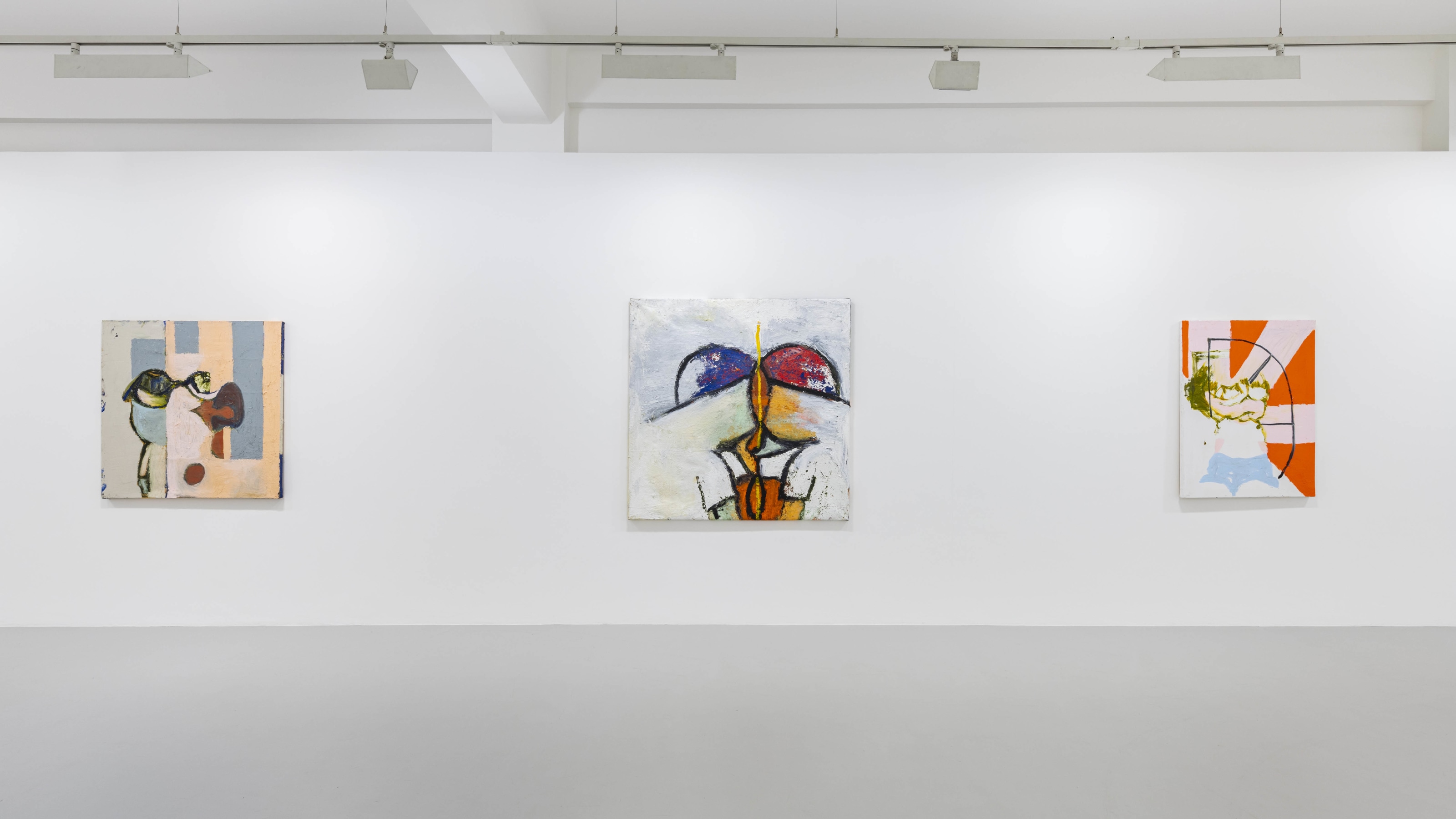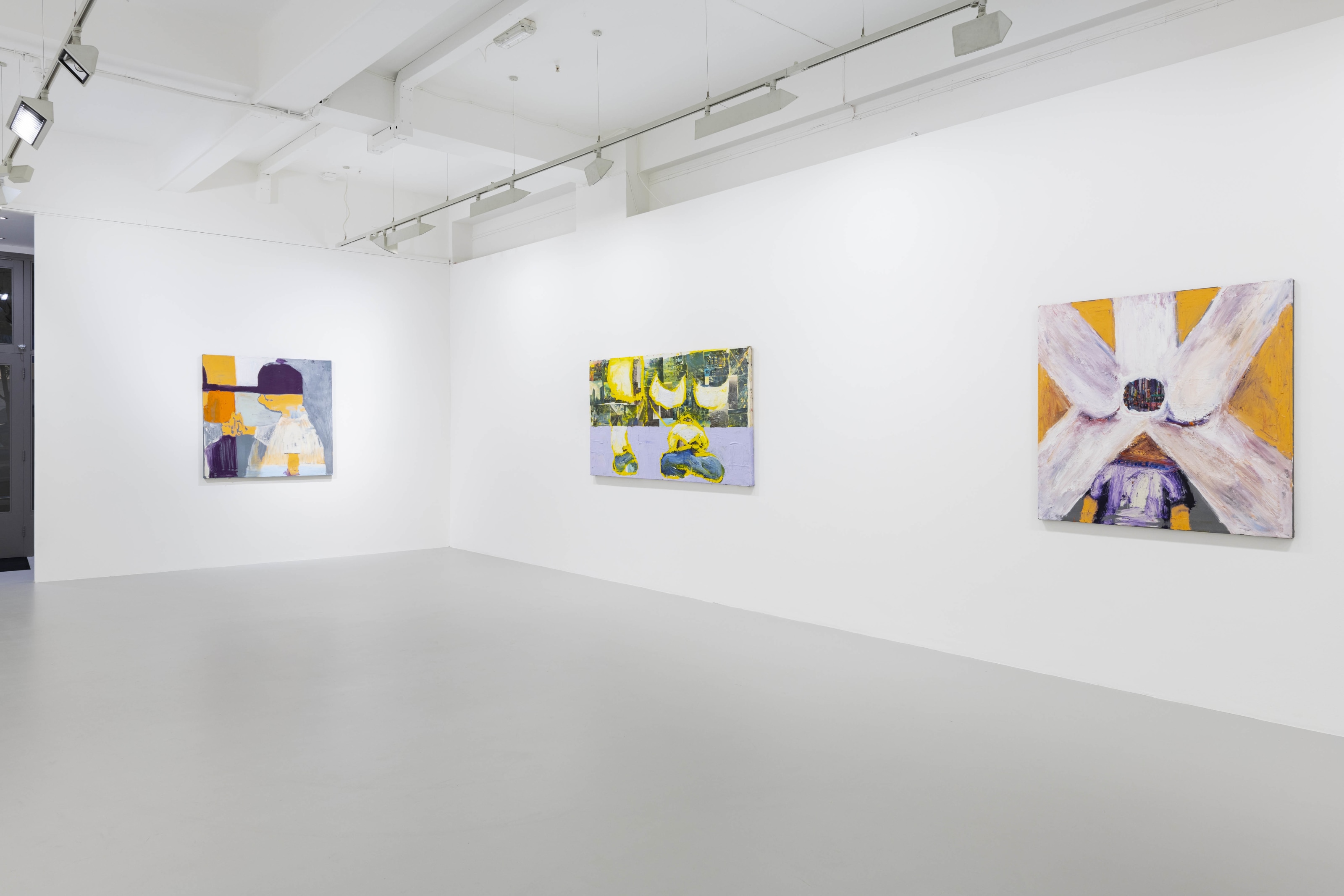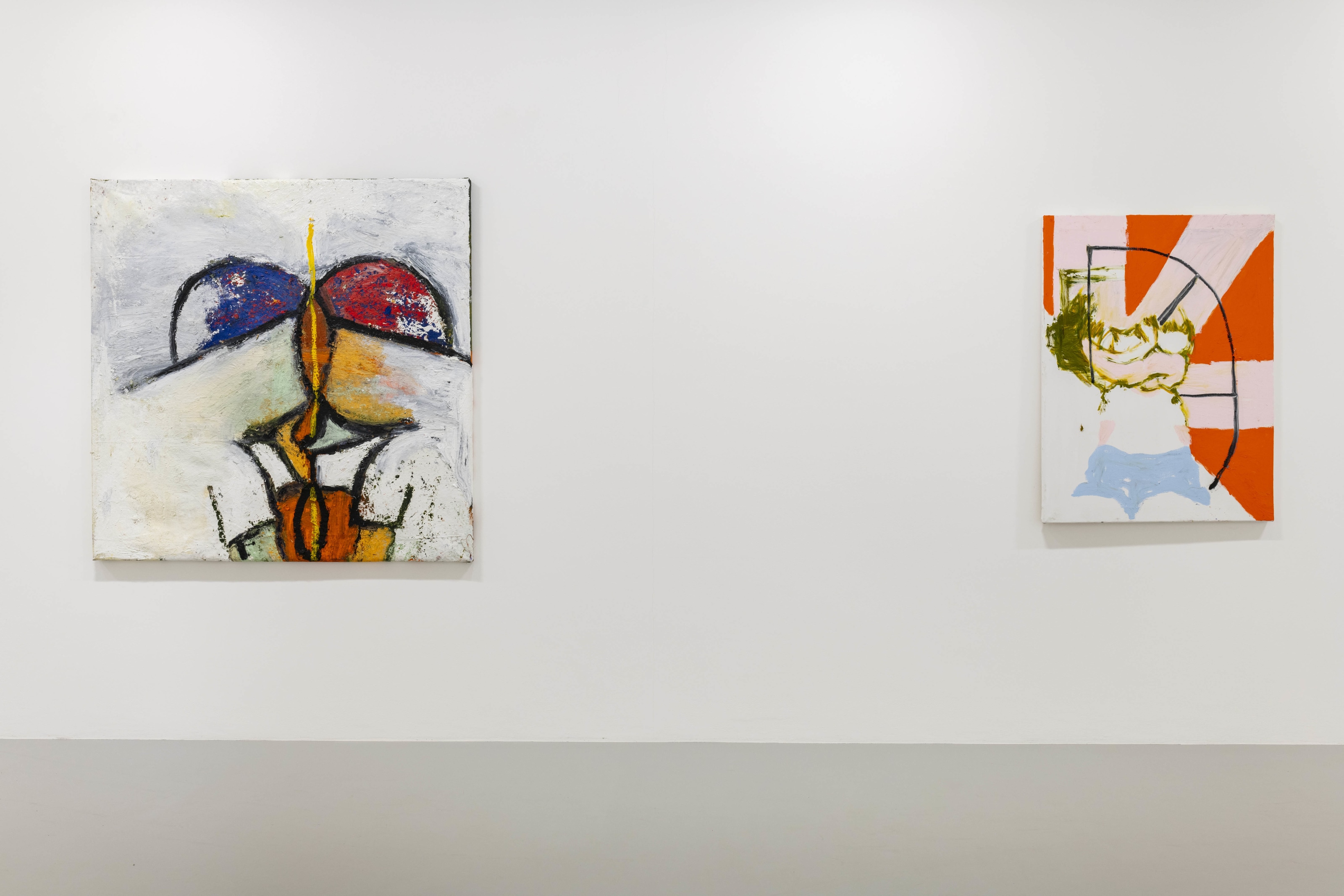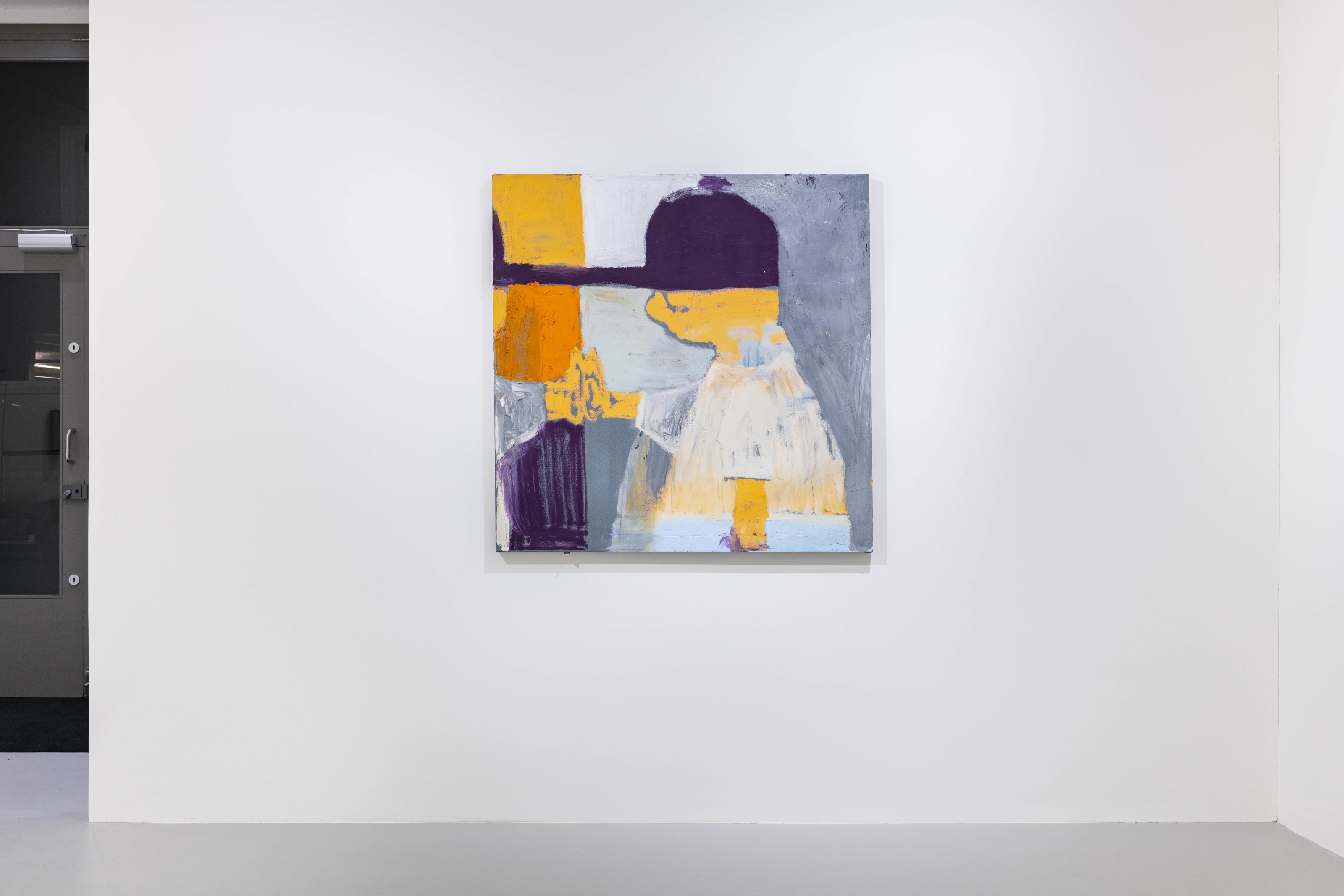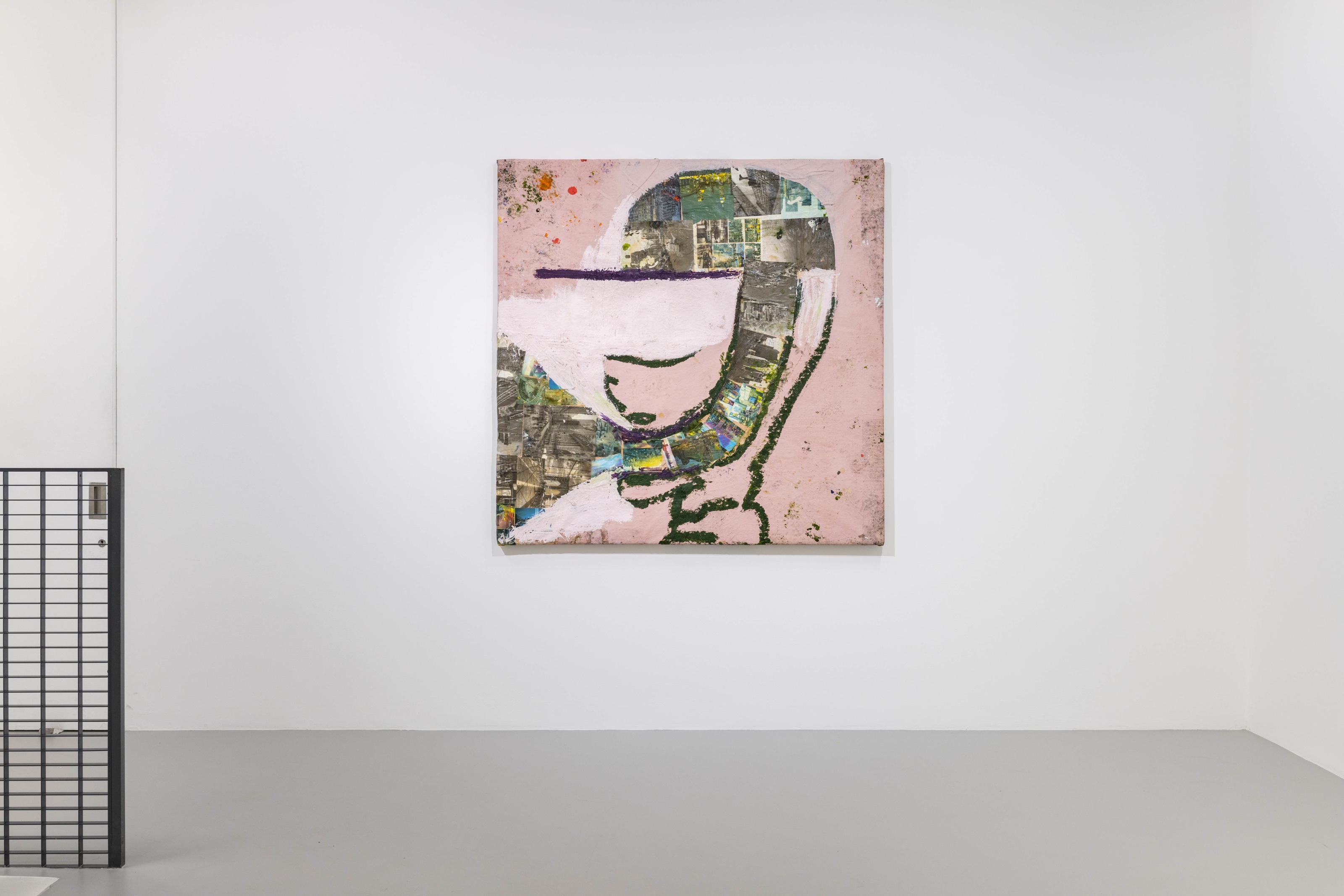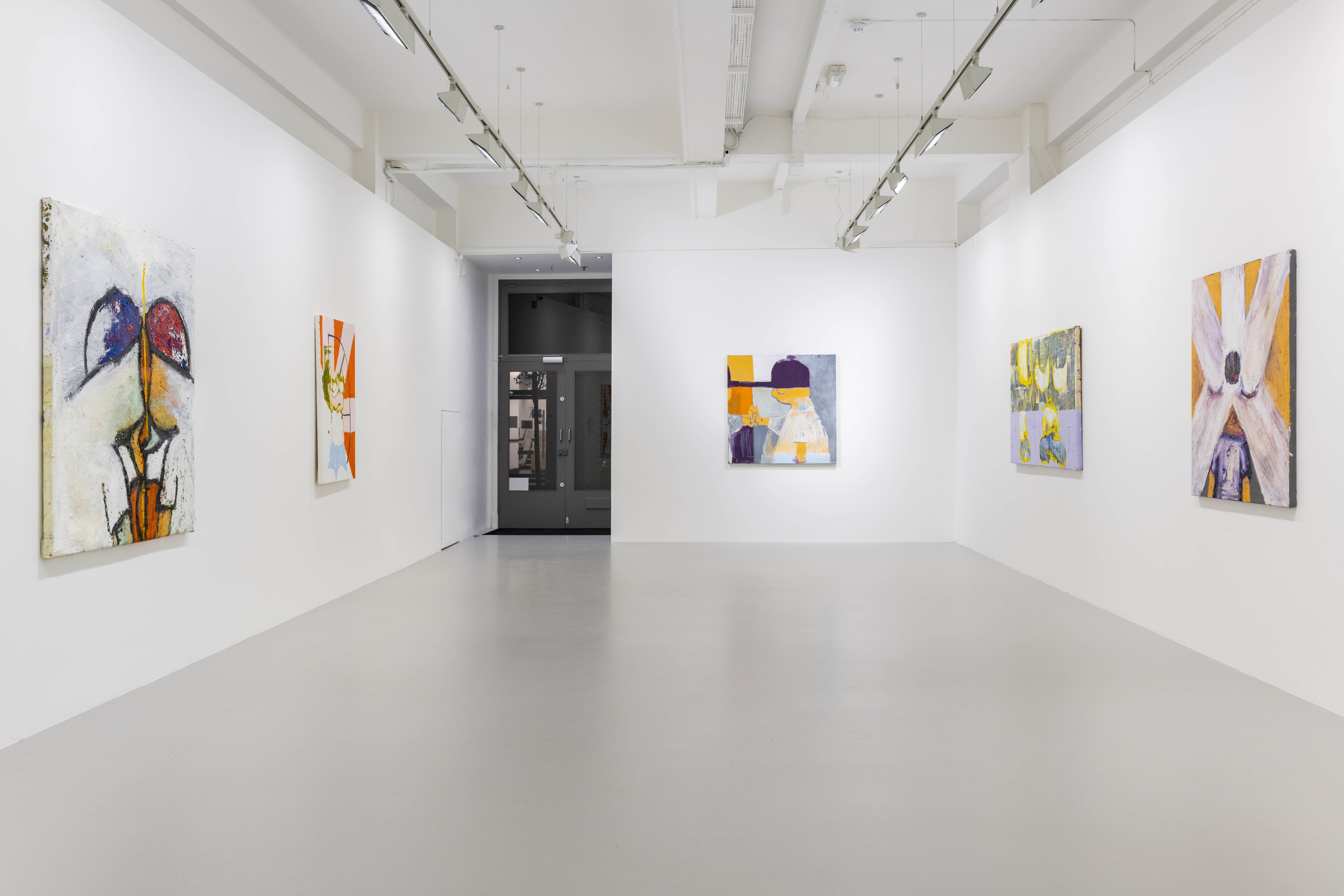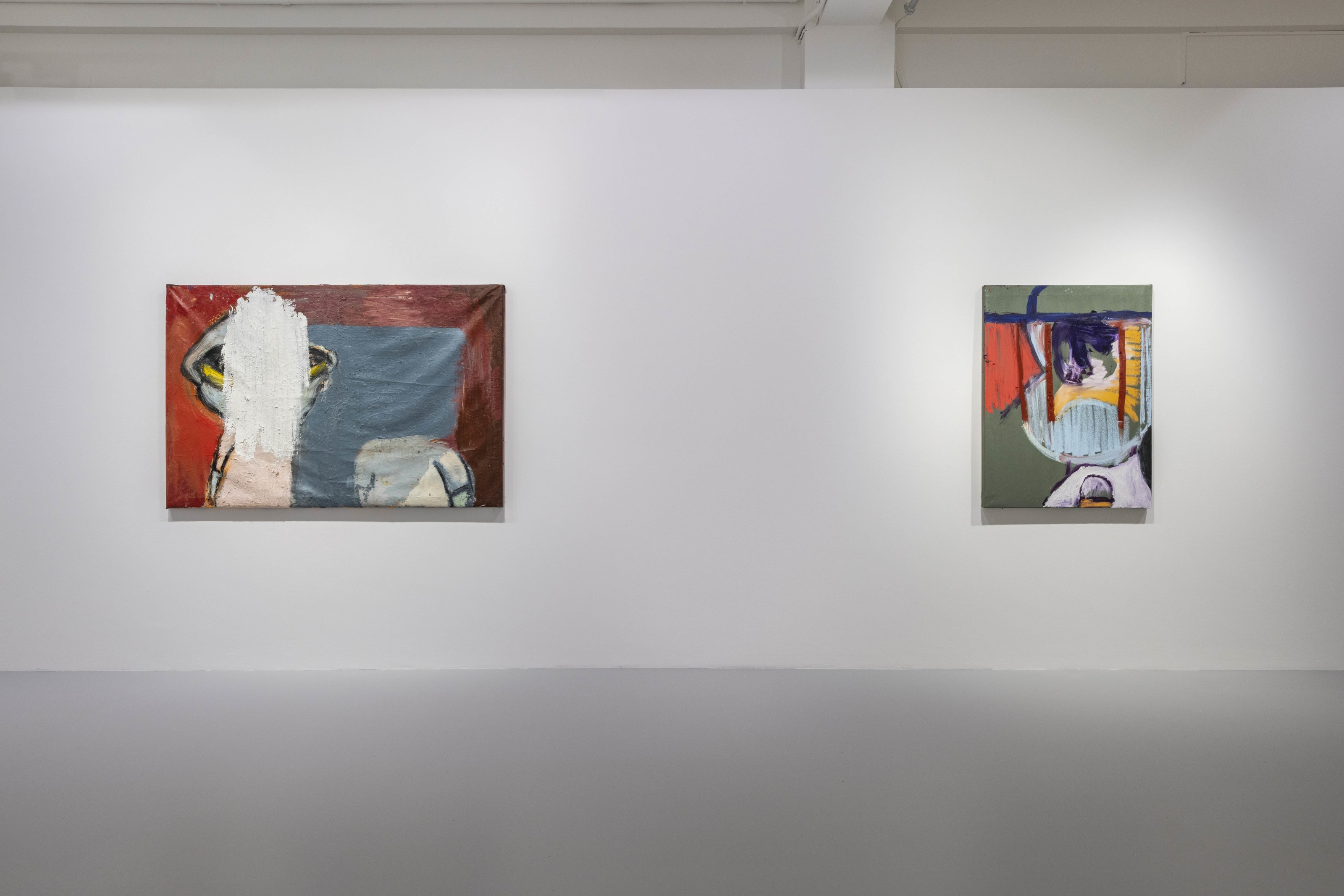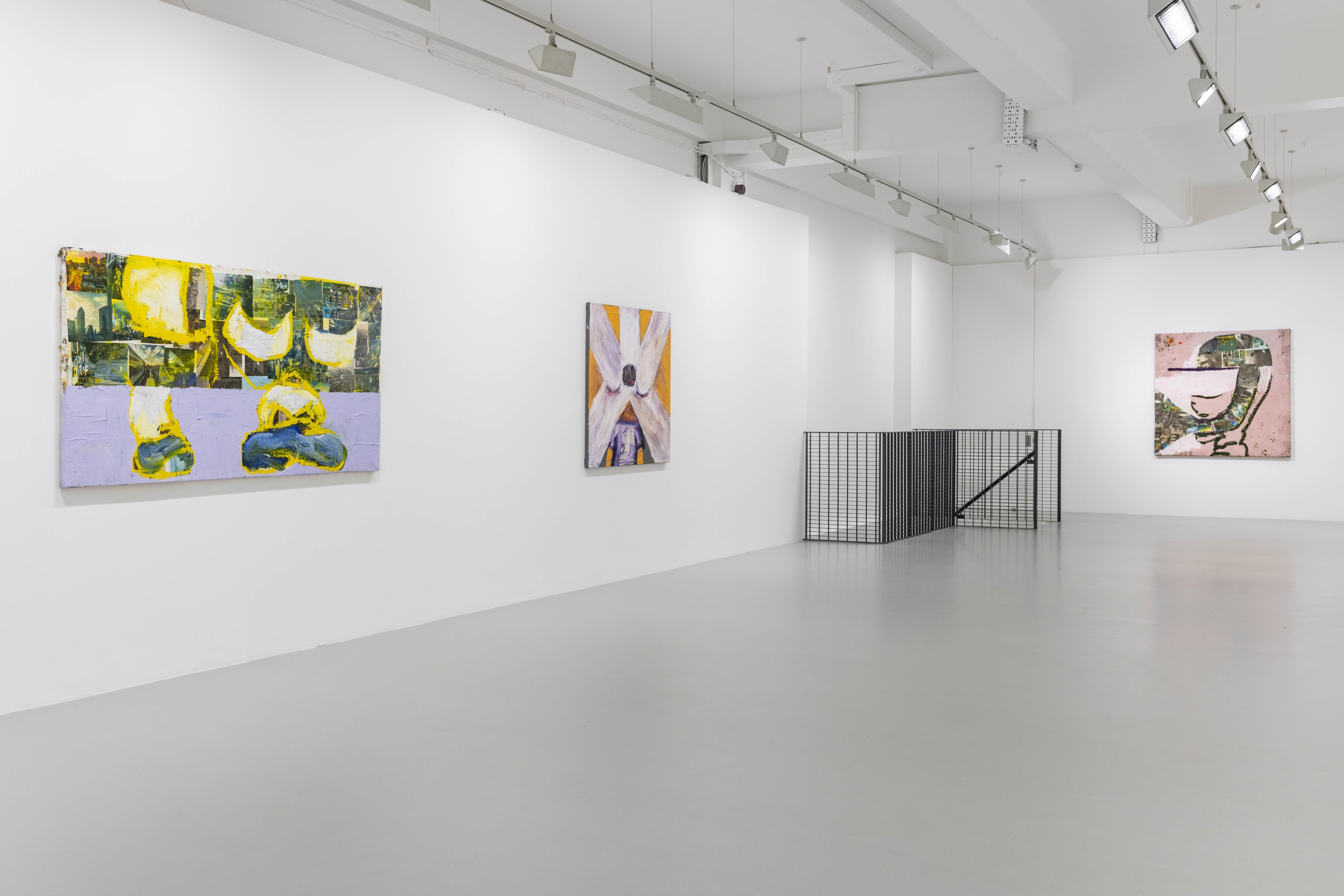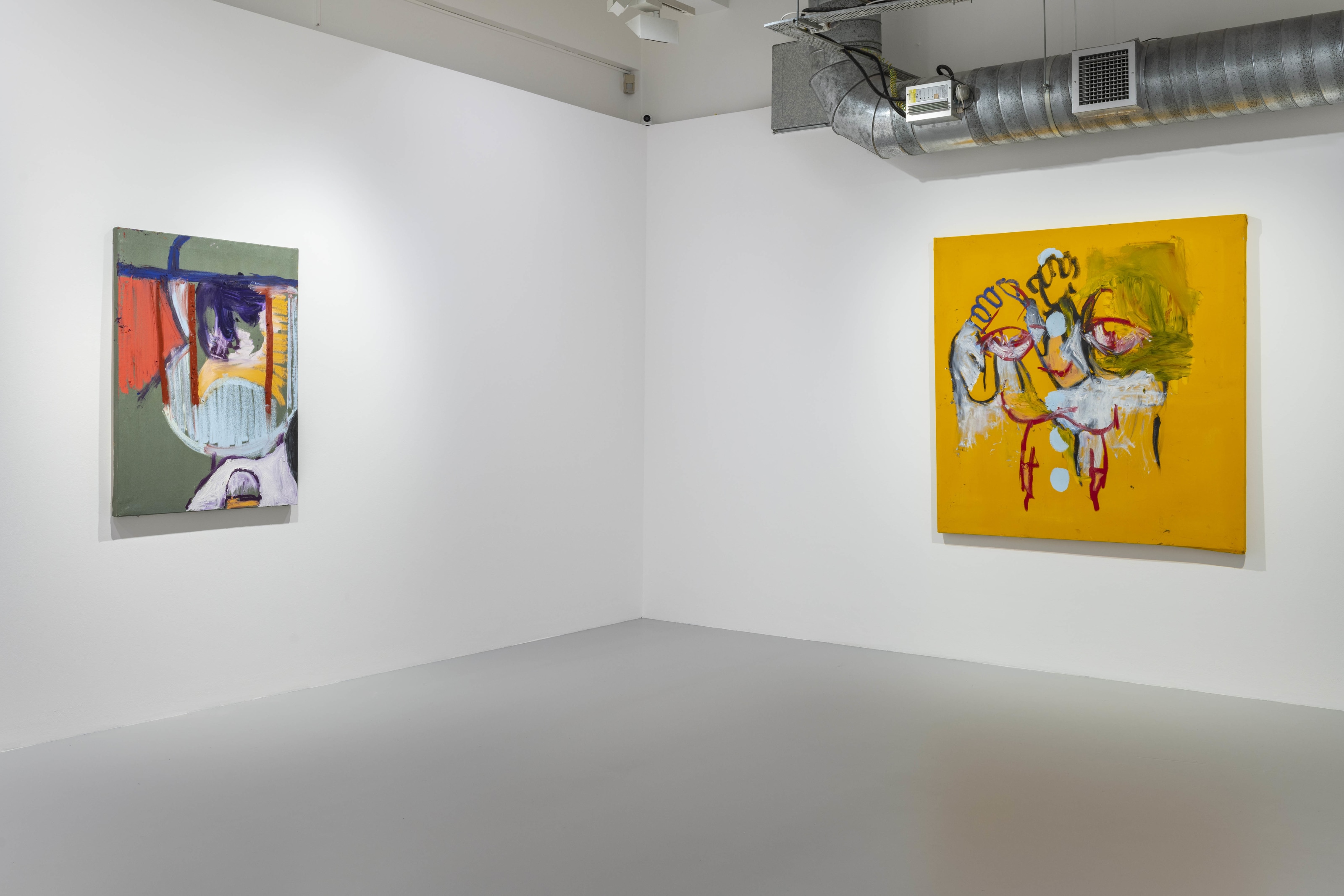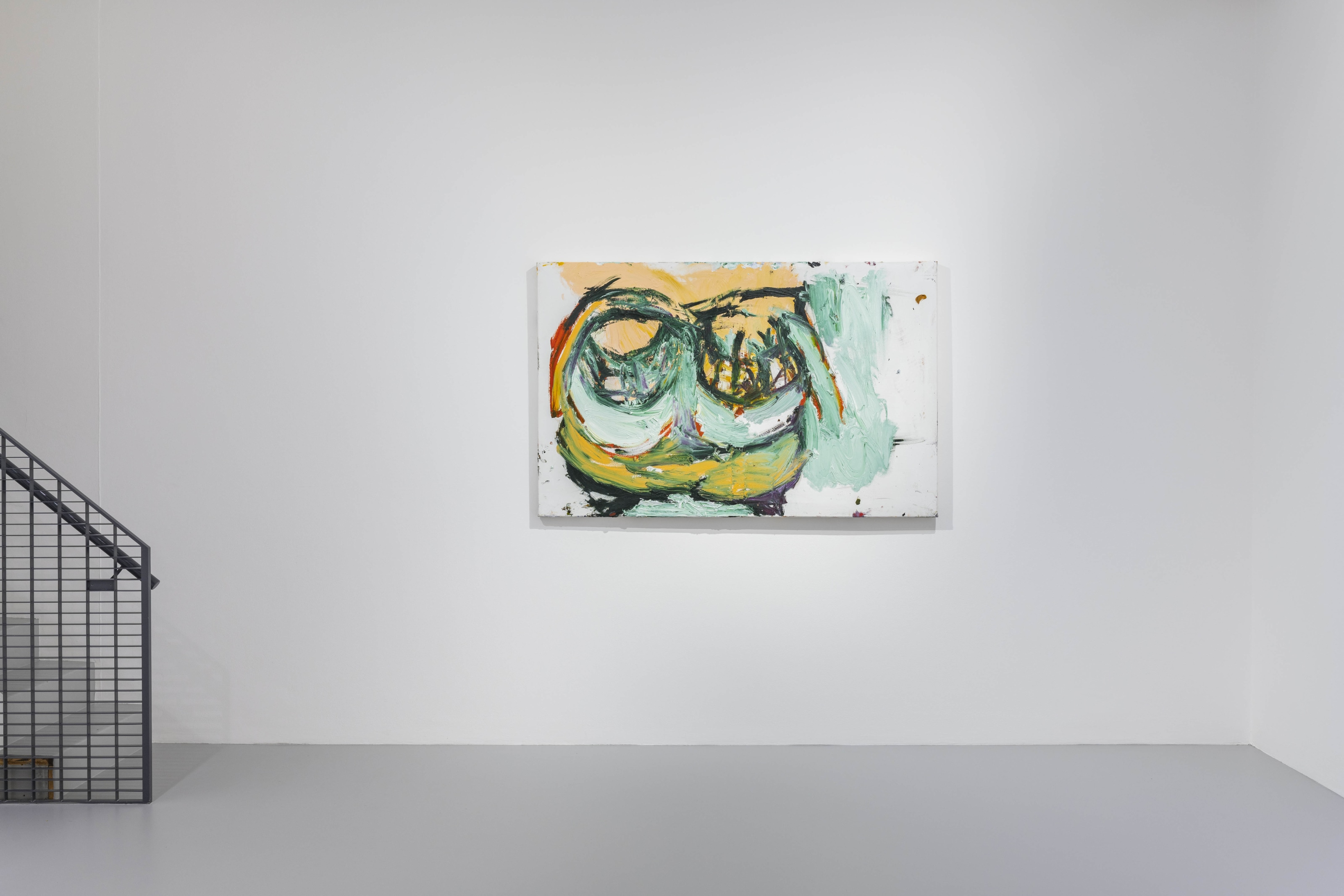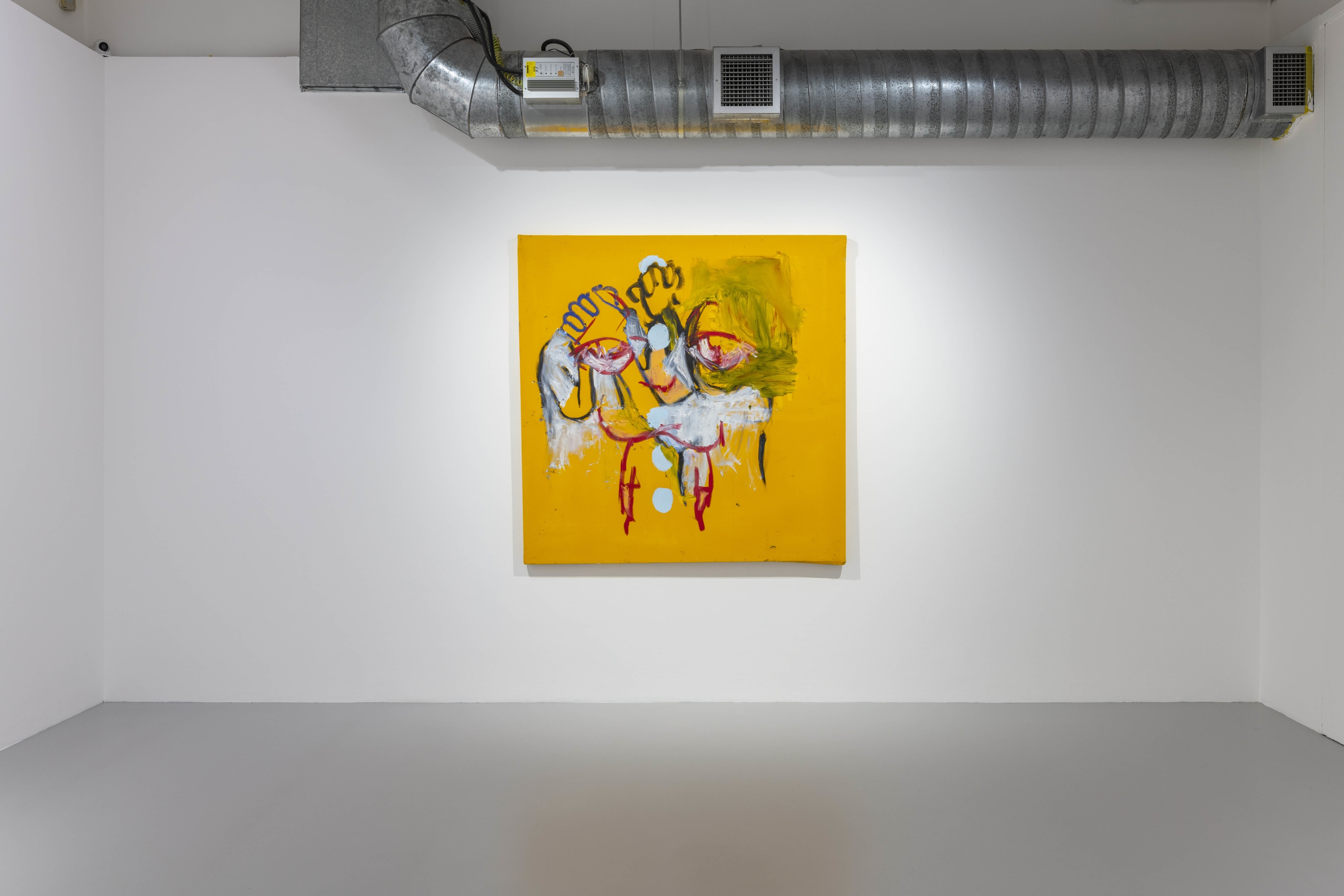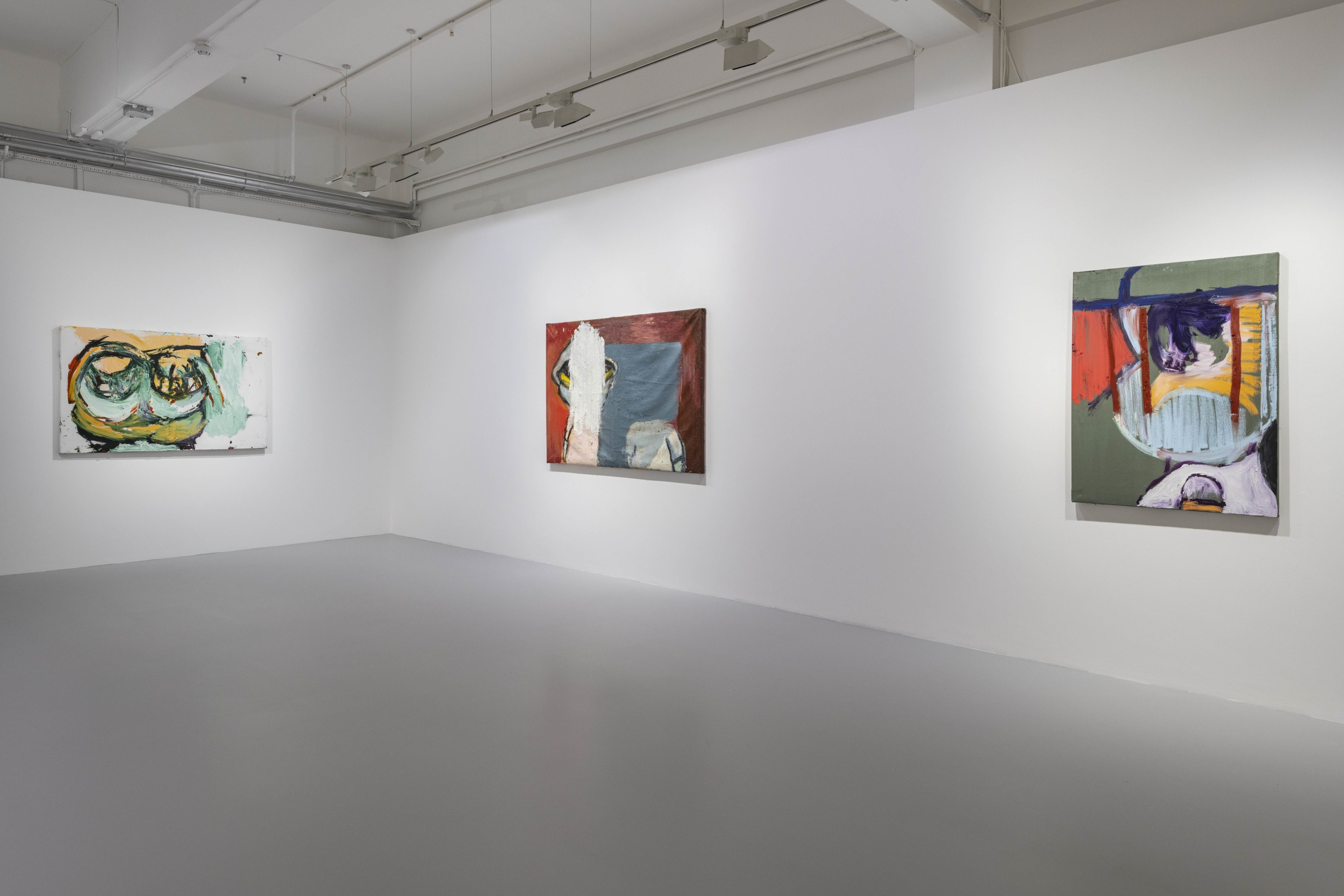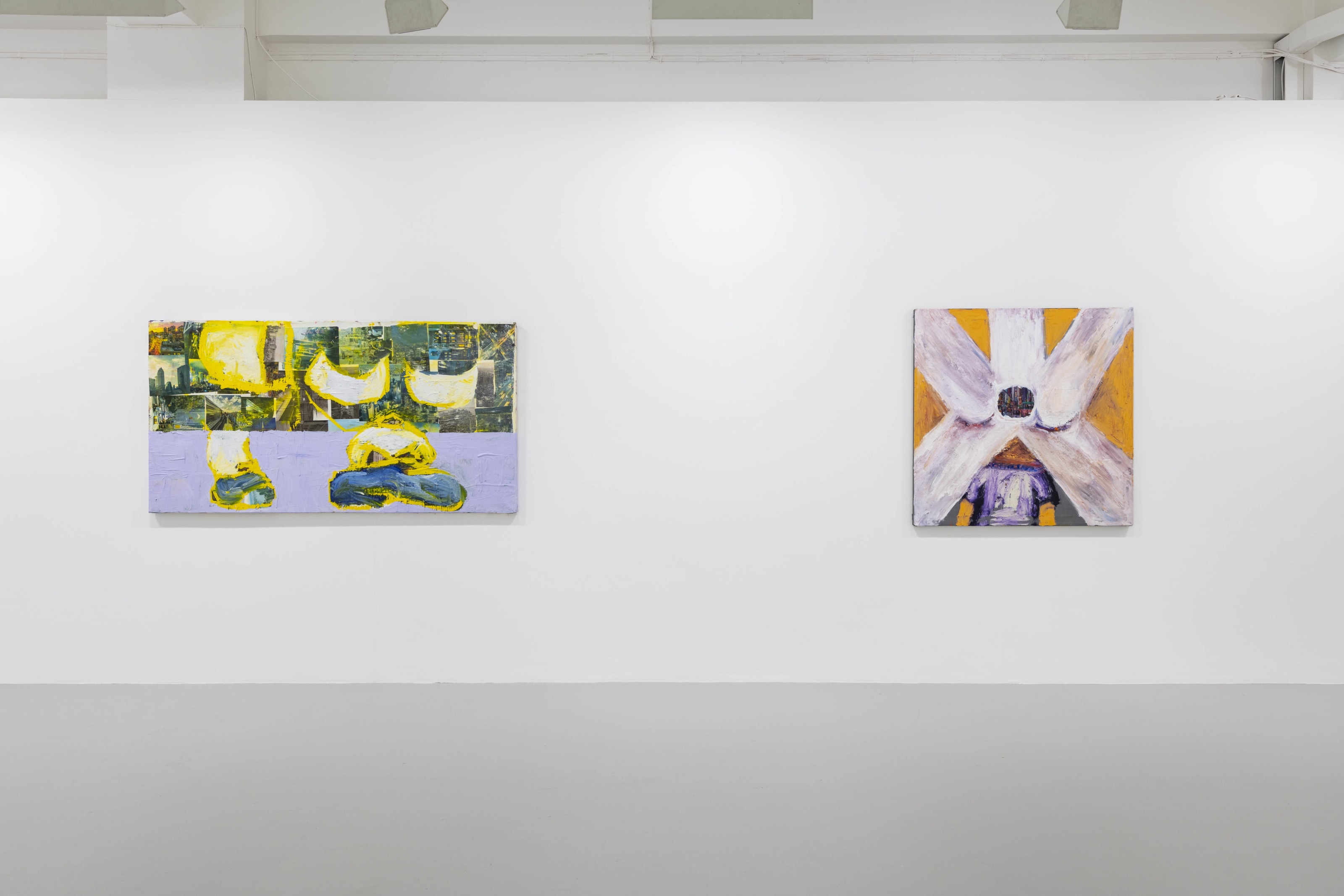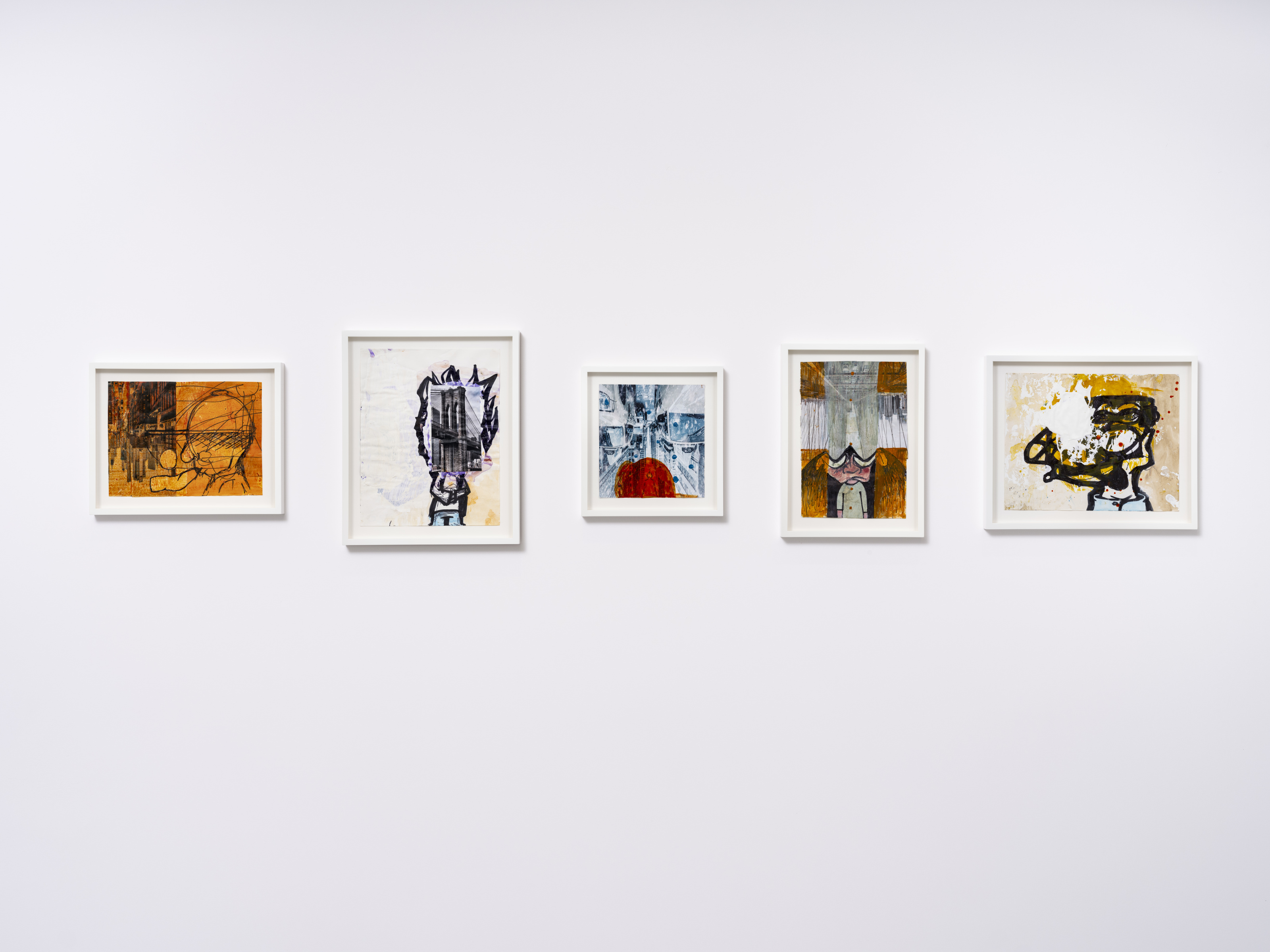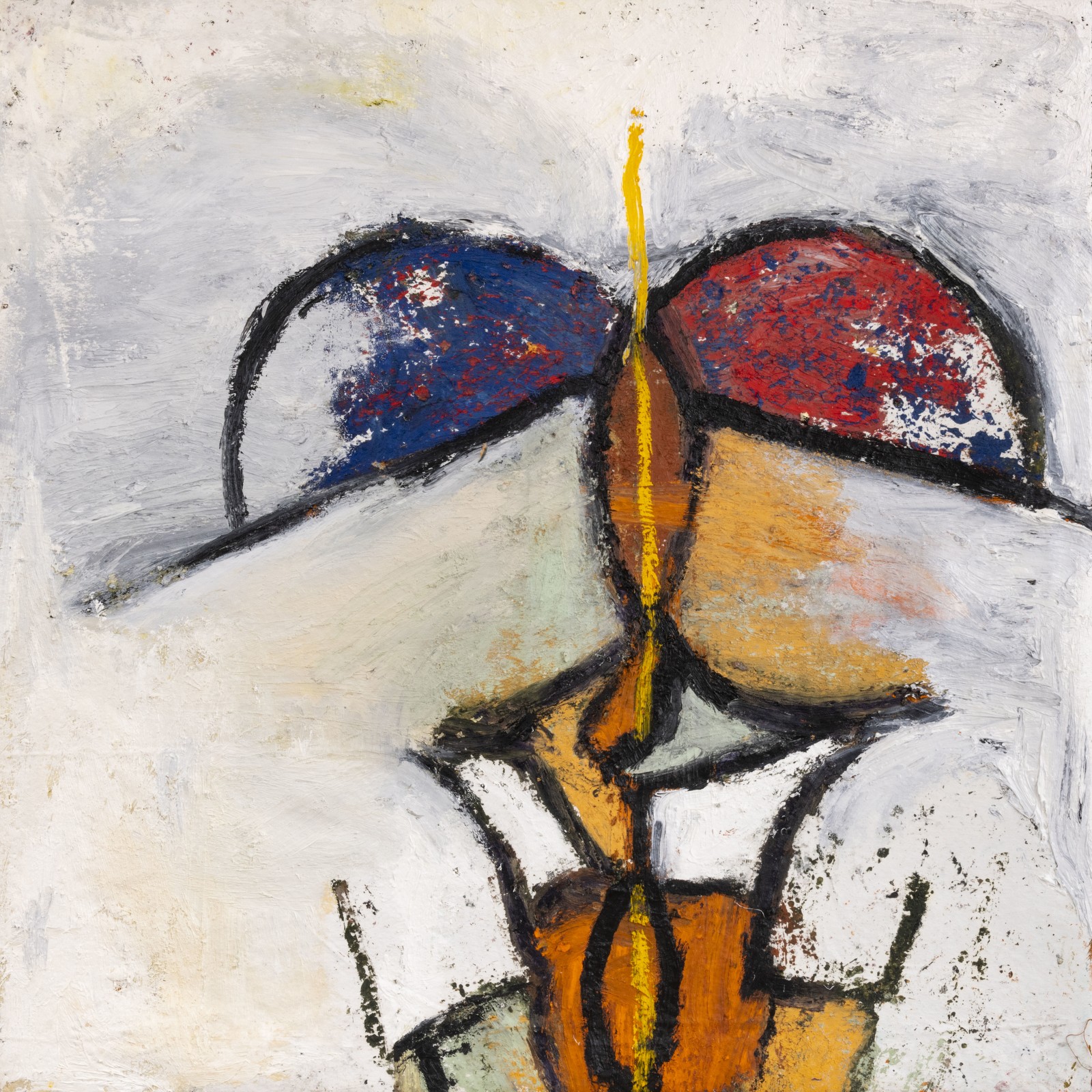Overview
Pilar Corrias is pleased to present Gerasimos Floratos: 'Nodes'; the artist’s second solo exhibition at the gallery, comprising eleven paintings and five works on paper made in 2020.
Pilar Corrias is pleased to present Gerasimos Floratos: 'Nodes'; the artist’s second solo exhibition at the gallery, comprising eleven paintings and five works on paper made in 2020.
There is a scene in Vladimir Nabokov's 1935 novel Invitation to a Beheading in which the soon-to-be-beheaded protagonist receives a prison visit from his estranged mother. At some point in their awkward conversation, she tells him about a kind of toy she played with as a child - strange, mottled, indecipherable objects that would resolve when placed in front of a particular kind of crooked mirror. In the mirrored surface, the rest of the world would appear totally distorted, but these 'nonnons' would become 'wonderful, sensible' images: 'flowers, a ship, a person, a landscape'. She describes them as 'marvellous gimmicks'. 'Why do you tell me all this?' the prisoner asks.
Why am I telling you all this? Because there is something metaphysical going on in the 11 new paintings in Gerasimos Floratos' second show at Pilar Corrias. Within their thickly spread, mottled brushstrokes, more or less discernible figures fuse, fight, split off from themselves. These ambiguous images do not resolve magically into 'wonderful, sensible' painterly clichés when held at the right angle in a reflective surface. But, like the prisoner's mother's mirror, they hold two kinds of space; painting, here, is a node between two simultaneous and incommensurate realities. We could call these interior and exterior, psychological and physical. (We could also say, per Nabokov, 'non, non' - the canvas is neither of these things; it's its own empirical reality. That's the real gimmick.) In Peak a figure in a purple baseball cap stretches out his hand to touch his reflection - to check the surface is real? Or to check that he is?
There is a scene in Vladimir Nabokov’s 1935 novel Invitation to a Beheading in which the soon-to-be-beheaded protagonist receives a prison visit from his estranged mother. At some point in their awkward conversation, she tells him about a kind of toy she played with as a child – strange, mottled, indecipherable objects that would resolve when placed in front of a particular kind of crooked mirror. In the mirrored surface, the rest of the world would appear totally distorted, but these ‘nonnons’ would become ‘wonderful, sensible’ images: ‘flowers, a ship, a person, a landscape’. She describes them as ‘marvellous gimmicks’. ‘Why do you tell me all this?’ the prisoner asks.
Why am I telling you all this? Because there is something metaphysical going on in the 11 new paintings in Gerasimos Floratos’ second show at Pilar Corrias. Within their thickly spread, mottled brushstrokes, more or less discernible figures fuse, fight, split off from themselves. These ambiguous images do not resolve magically into ‘wonderful, sensible’ painterly clichés when held at the right angle in a reflective surface. But, like the prisoner’s mother’s mirror, they hold two kinds of space; painting, here, is a node between two simultaneous and incommensurate realities. We could call these interior and exterior, psychological and physical. (We could also say, per Nabokov, ‘non, non’ – the canvas is neither of these things; it’s its own empirical reality. That’s the real gimmick.) In Peak a figure in a purple baseball cap stretches out his hand to touch his reflection – to check the surface is real? Or to check that he is?
Floratos is showing us head space – literally and metaphorically. One almost-square painting, Bridge Bath, features a slumped figure in a purple t-shirt. Where the head should be is a five-pointed starburst of white light and, at its centre, framed by an imperfect circle, is a postcard of Times Square in all its colourful, gaudy illumination. Its subtitle could be ‘Self-Portrait as City’: the city – New York City – as the central protagonist in the Floratos’ painted psychodrama. Also: the city as a way of thinking, as a methodology – from the one-way flow of its gridded thoroughfares to the lateral, underground and meandering motion that happens in between.
There is also another way of reading this image. Look again: at the base of two of the star’s ‘limbs’ are purple crescents that could be closed eyelids, making the porthole to Times Square a third eye. Floratos speaks about ‘Times Square mysticism’ – the idea that even in this temple to materialism, this centre of commerce and capitalism, we can experience moments of something like transcendence. Times Square is an intersection; beneath the thrum of the advertising screens, the city is vibrating on a different level.
Floratos is a romantic. He grew up in Hell’s Kitchen, around the corner from Times Square, and still lives and has his studio in the neighbourhood. The city and its rhythms are in him. A lot has been said about the fundamental urban-ness of his paintings – from the graffiti-inflected earlier works to the recurring motifs of the famous yellow cab and his slacker avatar, the antithesis of corporate flash, in his baggy pants and his ball cap. There is a certain speed, maybe even hastiness, to Floratos’ mark-making, like he has to get an idea down before it gets pushed aside by the barrage of external stimuli.
The Nodes works bring a little bit of the neighbourhood with them – the collaged postcards of the New York skyline in Bridge Bath, River Head and Reservoir exchange were thrown into the street as the small tourist shops around Floratos’ family deli started to go bust during lockdown. They are images of the iconic capitalist metropolis in all of its sleek, towering glory, but they are also the material evidence of its brutal churn: the city’s lower functions – as unthinking gut, chewing you up
and shitting you out.
The new paintings are a little less visceral than previous works, where the paint sometimes feels like it has been coerced into intestinally tight twists and turns. These works, while smaller in scale, are more spacious – the figures have softer edges, the colour palette is more muted. Some of them they have a hazy, almost dreamy quality. Call it the other side of the mirror; call it being spaced out. Where the recurring figures that he used to call ‘minions’ in older series of work are all body – oral fixation and base desire – there are heads everywhere in the Nodes paintings. Sometimes they’re attached to a body; sometimes they implicate the whole of the canvas. That makes sense: since lockdown, we’ve all spent more time in our own thoughts. These works are a reminder that painting, as a process, is both physical and cerebral. They are paintings in the gutter, looking at the stars.



